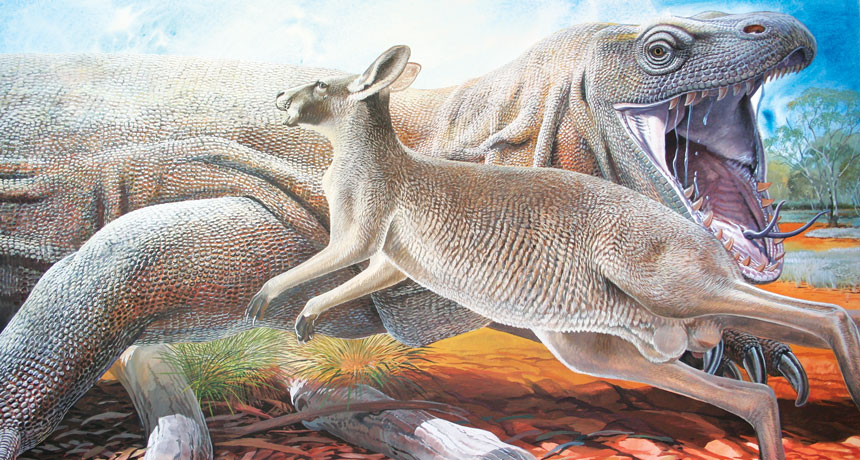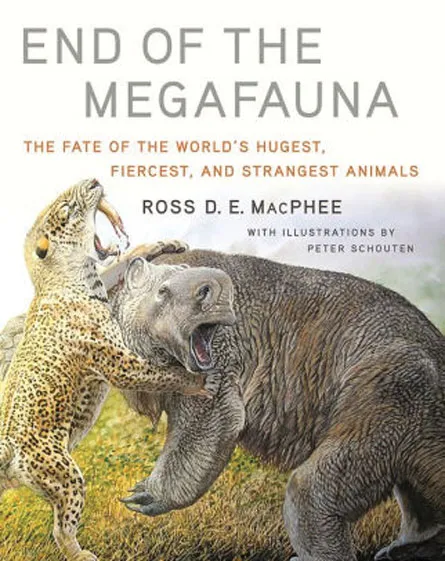‘End of the Megafauna’ examines why so many giant Ice Age animals went extinct
New book's colorful illustrations also offer perspective of just how large these creatures were

VANISHING ACT A relative of the Komodo dragon, this goanna, shown attacking a wallaby, lived in Australia 50,000 years ago. What happened to this and other extinct giant animals is the subject of a new book.
© by P. Schouten, All rights reserved
 End of the Megafauna
End of the Megafauna






